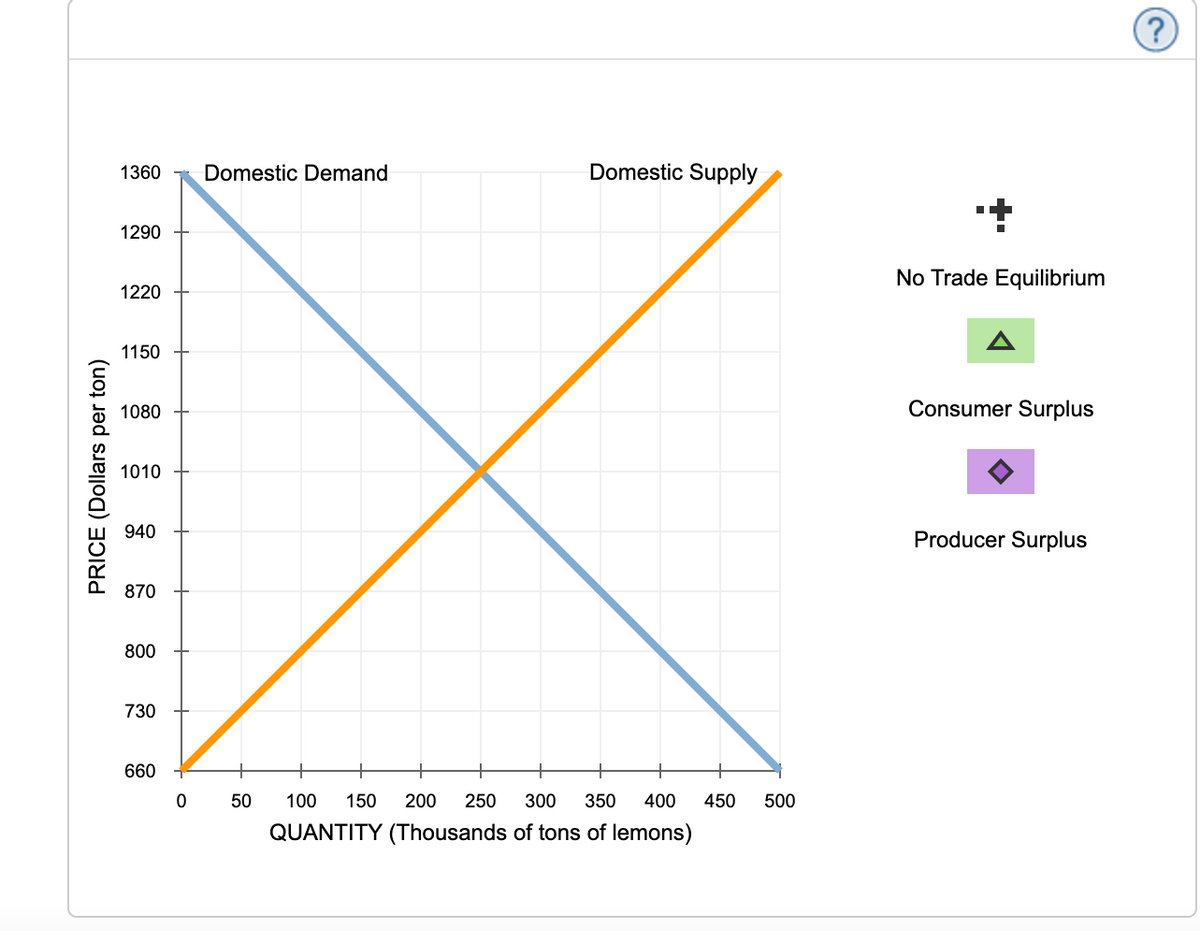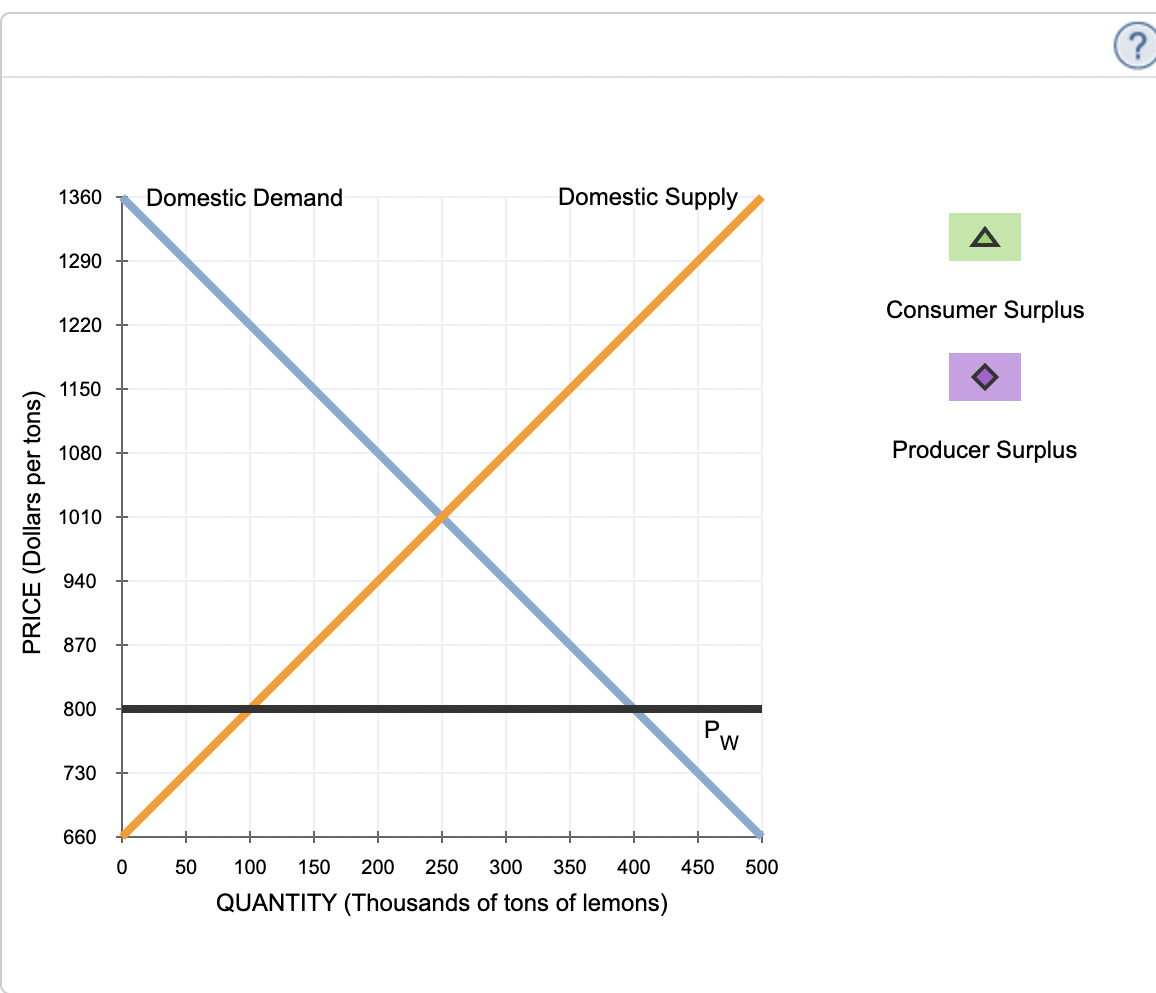PRICE (Dollars per ton) 1360 Domestic Demand Domestic Supply 1290 1220 1150 1080 1010 940 870 800 730 660 0 50 100 150 200 250 300 350 400 450 500 QUANTITY (Thousands of tons of lemons) + No Trade Equilibrium Consumer Surplus Producer Surplus ? PRICE (Dollars per tons) 1360 Domestic Demand Domestic Supply 1290 1220 1150 1080 1010 940 870 800 730 W 660 0 50 100 150 200 250 300 350 400 450 500 QUANTITY (Thousands of tons of lemons) A Consumer Surplus Producer Surplus ?
PRICE (Dollars per ton) 1360 Domestic Demand Domestic Supply 1290 1220 1150 1080 1010 940 870 800 730 660 0 50 100 150 200 250 300 350 400 450 500 QUANTITY (Thousands of tons of lemons) + No Trade Equilibrium Consumer Surplus Producer Surplus ? PRICE (Dollars per tons) 1360 Domestic Demand Domestic Supply 1290 1220 1150 1080 1010 940 870 800 730 W 660 0 50 100 150 200 250 300 350 400 450 500 QUANTITY (Thousands of tons of lemons) A Consumer Surplus Producer Surplus ?
Chapter10: Monopolistic Competition And Oligoply
Section10.5: Price And Output Decisions For An Oligopolist
Problem 1GE
Related questions
Question
1. Consider the Kenyan market for lemons.
The following graph shows the domestic demand and domestic supply curves for lemons in Kenya. Suppose Kenya's government currently does not allow the international trade in lemons.
Use the black point (plus symbol) to indicate the equilibrium price of a ton of lemons and the equilibrium quantity of lemons in Kenya in the absence of international trade. Then, use the green point (triangle symbol) to shade the area representing consumer surplus in equilibrium. Finally, use the purple point (diamond symbol) to shade the area representing producer surplus in equilibrium.
Note: Select and drag a fill area point from the palette to the graph. To fill in regions on the graph, merely drop the fill area point on the desired region.
Based on the previous graph, total surplus in the absence of international trade is_________.
2. The following graph shows the same domestic demand and supply curves for lemons in Kenya. Suppose that the Kenyan government changes its international trade policy to allow the free trade of lemons. The horizontal black line (PWPW) represents the world price of lemons at $800 per ton. Assume that Kenya's entry into the world market for lemons has no effect on the world price and there are no transportation or transaction costs associated with international trade in lemons. Also assume that domestic suppliers will satisfy domestic demand as much as possible before any exporting or importing takes place.
Use the green point (triangle symbol) to shade consumer surplus, and then use the purple point (diamond symbol) to shade producer surplus.
3. When Kenya allows free trade of lemons, the price of a ton of lemons in Kenya will be $800. At this price _____ tons of lemons will be demanded in Kenya, and_____ tons will be supplied by domestic suppliers. Therefore, Kenya will import_____ tons of lemons.
4. Using the information from the previous tasks, complete the following table to analyze the welfare effect of allowing free trade.
Without Free Trade(Millions of dollars) With Free Trade(Millions of dollars)
Consumer Surplus ____________ ___________Producer Surplus ______________ ___________
When Kenya allows free trade, the country's consumer surplus ______ by______ and producer surplus ______ by ______. So, the net effect of international trade on Kenya's total surplus is a _______ of _______.

Transcribed Image Text:PRICE (Dollars per ton)
1360
Domestic Demand
Domestic Supply
1290
1220
1150
1080
1010
940
870
800
730
660
0
50
100 150 200 250 300
350
400 450 500
QUANTITY (Thousands of tons of lemons)
+
No Trade Equilibrium
Consumer Surplus
Producer Surplus
?

Transcribed Image Text:PRICE (Dollars per tons)
1360
Domestic Demand
Domestic Supply
1290
1220
1150
1080
1010
940
870
800
730
W
660
0
50
100 150 200 250 300 350 400 450 500
QUANTITY (Thousands of tons of lemons)
A
Consumer Surplus
Producer Surplus
?
Expert Solution
This question has been solved!
Explore an expertly crafted, step-by-step solution for a thorough understanding of key concepts.
This is a popular solution!
Trending now
This is a popular solution!
Step by step
Solved in 2 steps with 5 images

Recommended textbooks for you

